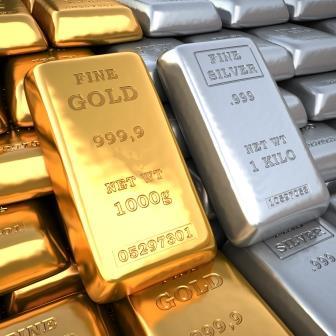Spot gold prices in the international market have found support near $1600 an ounce and showing signs of reversal. The US midterm election, mixed US economic releases, and hints of a possible end of Russia-Ukraine war influenced the precious yellow metal.
Negative investor sentiment due to a rapid rise in global interest rates, a strong US dollar, and higher bond yields eased the glitter of gold throughout this year. London spot gold prices fell for the seventh consecutive month in October, shedding more than 10 percent since January. However, prices now stabilized above $1700 an ounce, gaining more than 7 percent from its recent lows.
Geopolitical factors impact gold prices. The Russia-Ukraine tensions have taken gold prices to near-record highs in March due to its inflation hedge appeal. But the US Fed’s aggressive monetary tightening measures relative to other major central banks have made US currency an attractive destination for more yield. This made selling pressure in gold like non-interest-yielding assets.
In a significant retreat and potential turning point in the war, the Russian Defence Minister ordered his troops to withdraw from Kherson, the southern Ukrainian city on Wednesday. Kherson is the only major Ukrainian city under the control of Russian forces. However, the Ukraine president said that the announcement of the withdrawal may be a move to regroup the forces.
The war that began in late February has caused a tremendous amount of human suffering and a significant blow to the global economy. Not only did the war’s consequences affect those countries, but the entire global economy suffered from slower growth and higher inflation. The end of war is expected to boost global economic activities and reduce global inflation.
Uncertainties pertained to US midterm elections are also supporting gold prices. President Mr. Biden’s Democratic Party is likely to lose control of the House of Representatives to the opposition Republican Party. This has made a correction in the US greenback.
After hitting a two-decade high in September, the US currency now shed about 6 percent. Expectations that the US Fed could slow down the pace of hiking rates and mixed economic releases paused the rally in the dollar.
The latest US non-farm payroll data showed that the world’s largest economy created more new jobs than expected in October. But it flashed signs of a slowdown with a higher unemployment rate. The US inflation also cooled down in October with annual CPI coming below 8 percent for the first time in eight months.
Bullion traders continue to track the US economic numbers to get the US Fed’s outlook on monetary policies. The Fed has already hinted that the central bank could continue to increase rates if inflation does not slow. However, the recent softer-than-expected US inflation numbers raised hopes of a less aggressive rate hike by the US central bank in the coming meetings.
Easing global inflation is expected to push retail physical demand for the metal. Besides, a firm local market demand from top consumers like China and India continues to offer support to the metal.
On the price front, stiff support for London spot gold is placed at $1610 an ounce. If prices are unable to break the same, upticks are likely to continue in the near future. However, it is less likely for sharp rallies.
First published in The Economic Times










The hole world is facing recession !!We ve to wait and see how markets will rally